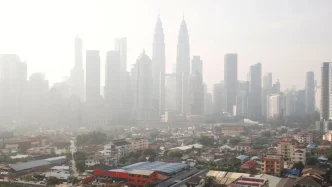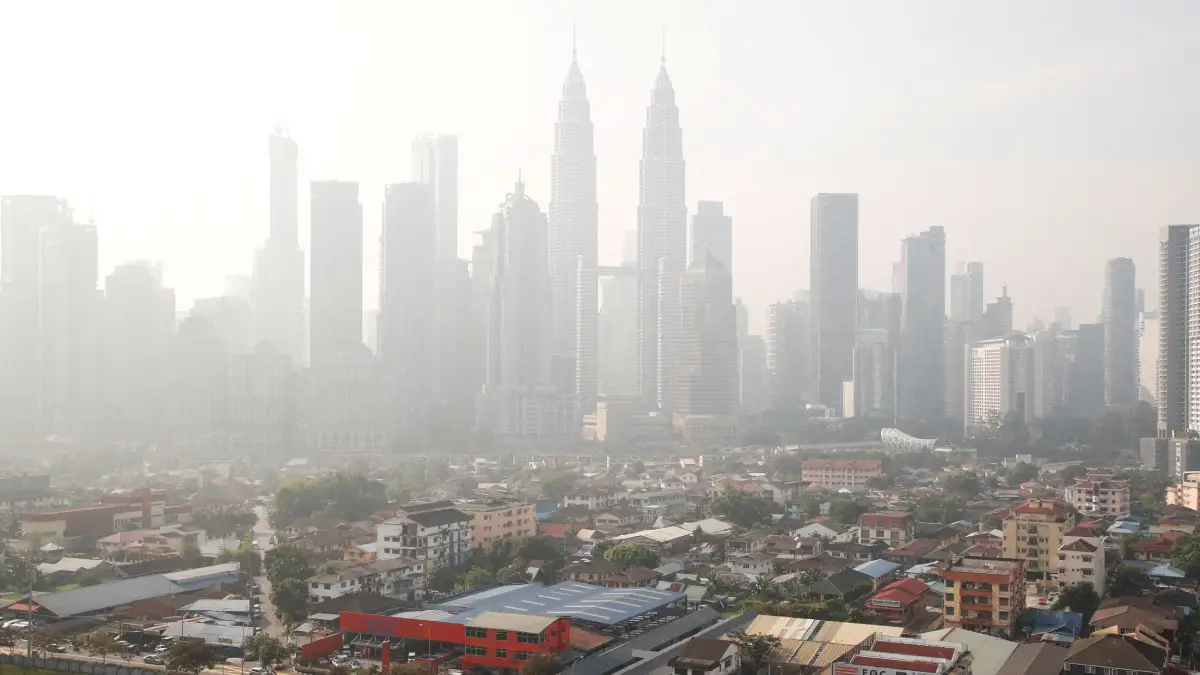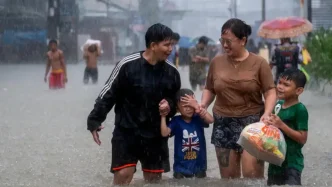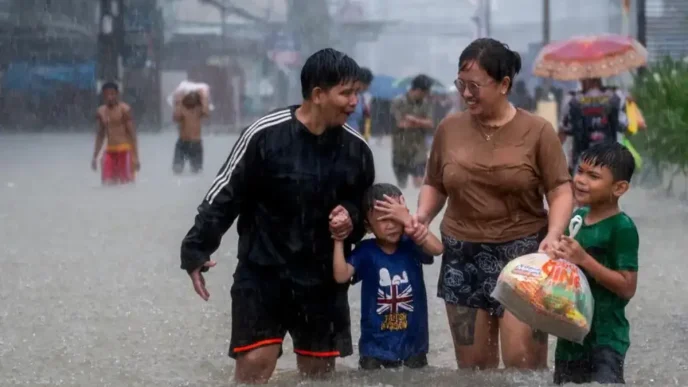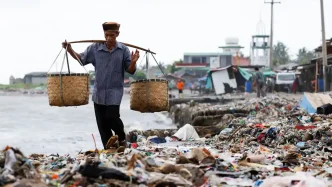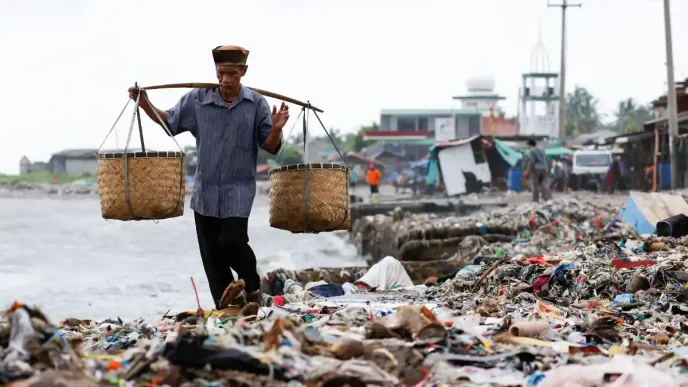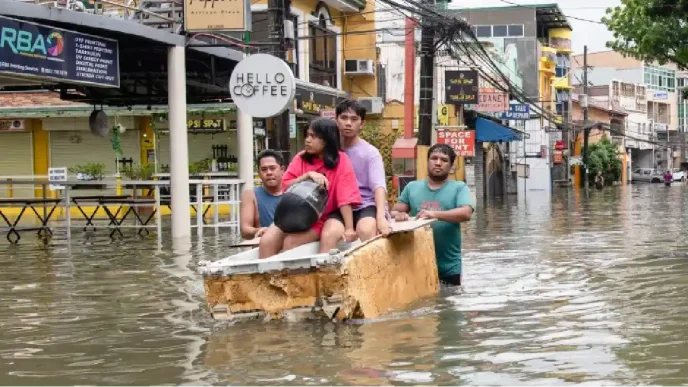As a thick haze continues to shroud parts of Malaysia, city dwellers are grappling with polluted air that disrupts daily life, prompting many to take protective measures. From wearing face masks to investing in air purifiers, residents are adapting to the environmental challenge, even as occasional drizzles offer fleeting relief. The persistent poor air quality, driven by dry conditions and potential transboundary haze from neighboring regions, has raised health concerns across the country.
Life Under the Haze
In Kuala Lumpur, the haze has forced many to alter their routines. Jaslin Ibrahim, a 39-year-old mother of two, has shelved her plans for outdoor activities to protect her family. With the haze lingering over the past week, she has kept her newborn indoors, forgoing their usual walks for fresh air. “Usually, I bring my newborn out for a walk to get some fresh air. But the haze hasn’t let up, so we’ve been staying inside” she said on July 28, 2025. To mitigate the impact at home, Jaslin recently purchased an air purifier, a small but necessary step to ensure cleaner air for her children.
Similarly, Daphne Lim, a 26-year-old executive from Cheras, has opted to stay indoors with windows tightly shut. When venturing outside becomes unavoidable, she relies on a face mask to shield herself from the polluted air. “I would wear a face mask when going out or prefer driving instead of walking to avoid the polluted air” she explained on July 28, 2025. For those whose livelihoods depend on being outdoors, the haze poses a constant challenge. Zamir Jailani, a 28-year-old p-hailing rider from Petaling Jaya, frequently wears a mask during his delivery rounds. “Some days, the air seems okay, but other times it’s quite bad, especially at noon when the scorching heat from the sun worsens the situation” he noted on the same date.
Street vendors, too, are feeling the strain. A stall owner in her 50s from Petaling Jaya, who preferred to be identified only as Lee, spends long hours by the roadside selling food. Already exposed to vehicle exhausts, she now contends with the added burden of haze. “The exhaust from vehicles is already bad, but now with the haze, I need to be more cautious about my health” she said on July 28, 2025, explaining her decision to wear a mask while working.
Air Quality Across Malaysia
The haze’s impact is evident in air quality readings across the country. According to the Air Pollutant Index Management System (APIMS), as of 12:33 pm on July 27, 2025, Cheras in Kuala Lumpur recorded the highest Air Pollutant Index (API) reading at 161, while Miri in Sarawak registered 131—both in the very unhealthy range. The API scale classifies air quality as good (0-50), moderate (51-100), unhealthy (101-200), very unhealthy (201-300), and hazardous (above 300). Just a day earlier, on July 26, Johan Setia in Selangor and Kuching in Sarawak reported unhealthy levels of 151 and 116, respectively, though conditions improved slightly to 83 and 79 by the following day.
Moderate air quality was reported in 60 monitoring stations across states including Selangor, Perak, Kuala Lumpur, Negri Sembilan, Sarawak, Putrajaya, Sabah, Pahang, Terengganu, Johor, Labuan, Penang, Melaka, Kedah, and Kelantan. Among these, Petaling Jaya recorded the highest API at 87, while Sandakan in Sabah and Kota Tinggi in Johor registered the lowest at 51. Six areas, including Balik Pulau in Penang and Langkawi in Kedah, reported good air quality on July 27, offering some respite to residents.
Regional Concerns and Transboundary Haze
Beyond local impacts, the haze in Malaysia is part of a broader regional issue. The Asean Specialised Meteorological Centre (ASMC) reported on July 27, 2025, that dry conditions persist across much of the southern Asean region, raising concerns about transboundary haze, particularly originating from Indonesia. Satellite imagery detected isolated to scattered hotspots in Sumatra and Borneo, with slight localized smoke plumes observed in western Kalimantan and central Sumatra. While cloud cover obscured full visibility, the risk remains evident.
Although isolated showers were noted overnight in parts of central and southern Sumatra as well as central and northeastern Borneo, much of the region remains parched. The ASMC forecasts that dry conditions will continue over southern Asean, with some showers expected in Sumatra, Java, and Kalimantan. However, rainfall may only temporarily alleviate the situation, as hotspots and smoke haze are likely to persist in drier areas. Prevailing winds from the southeast to south could further contribute to the spread of haze to neighboring countries, exacerbating air quality issues across borders.
In contrast, the northern Asean region has experienced wetter, cloudier weather, aided by southwest winds, which have kept hotspot activity low. This disparity underscores the uneven environmental challenges faced within the region, with southern areas like Malaysia bearing the brunt of the current haze crisis.
A Community Adapting
For now, Malaysian residents continue to adapt to the hazy conditions with practical measures, balancing health concerns with the demands of daily life. Face masks have become a common sight in urban areas, while air purifiers are increasingly seen as essential household items. Yet, the transient nature of relief—whether from brief drizzles or improved API readings—leaves many uncertain about when clearer skies will return.
As the southern Asean region braces for potentially worsening conditions, the resilience of communities like those in Kuala Lumpur and Petaling Jaya shines through. Whether it’s a mother safeguarding her children, a rider navigating polluted streets, or a vendor enduring roadside fumes, the haze has woven itself into the fabric of their routines. How long this adaptation must persist, however, remains an open question, hinging on regional weather patterns and coordinated efforts to address transboundary pollution.

